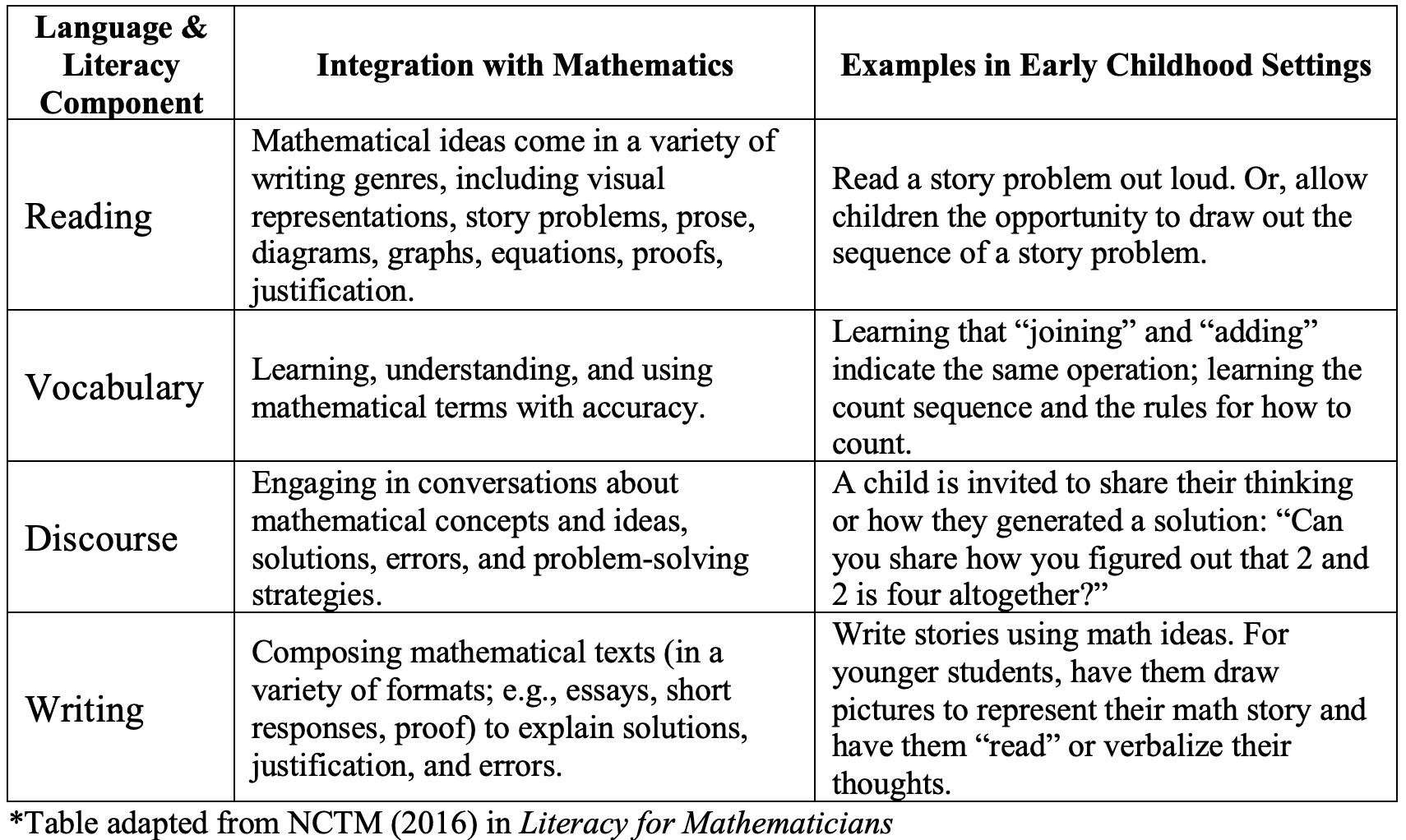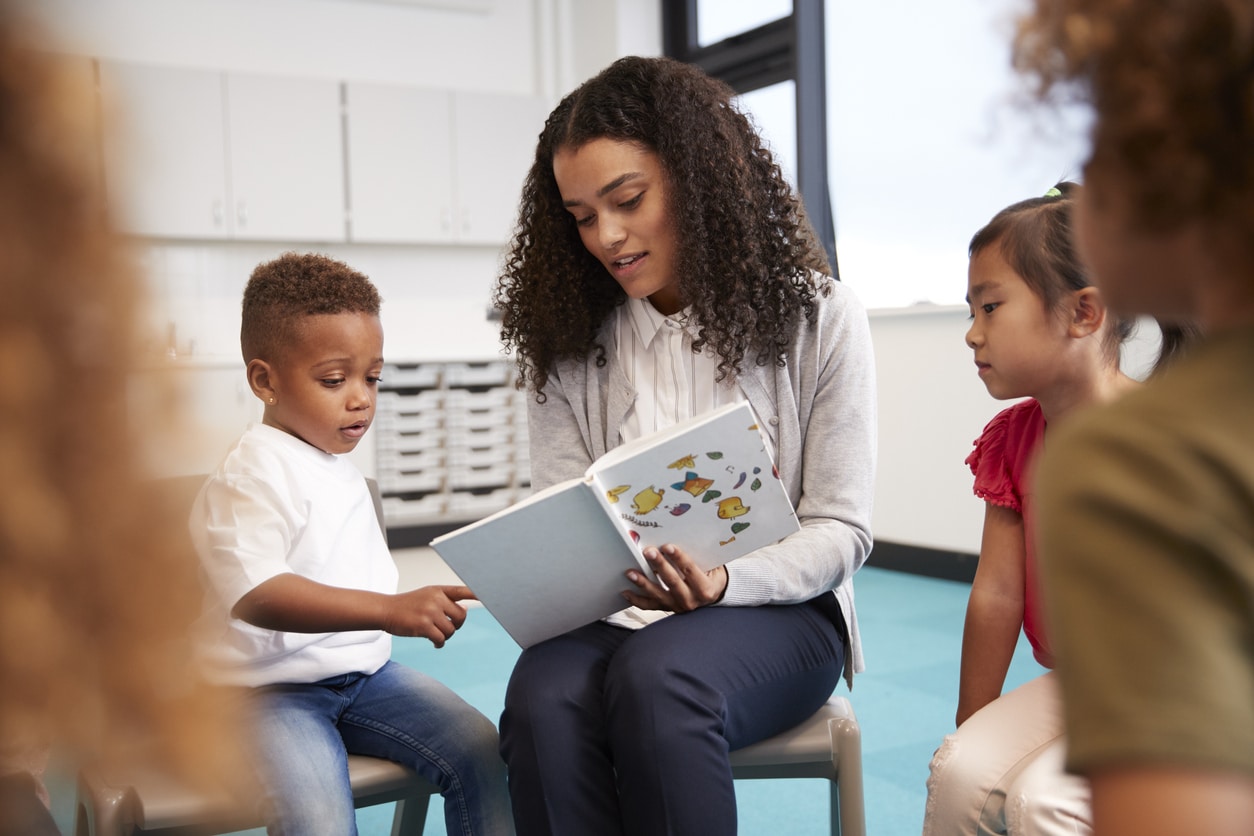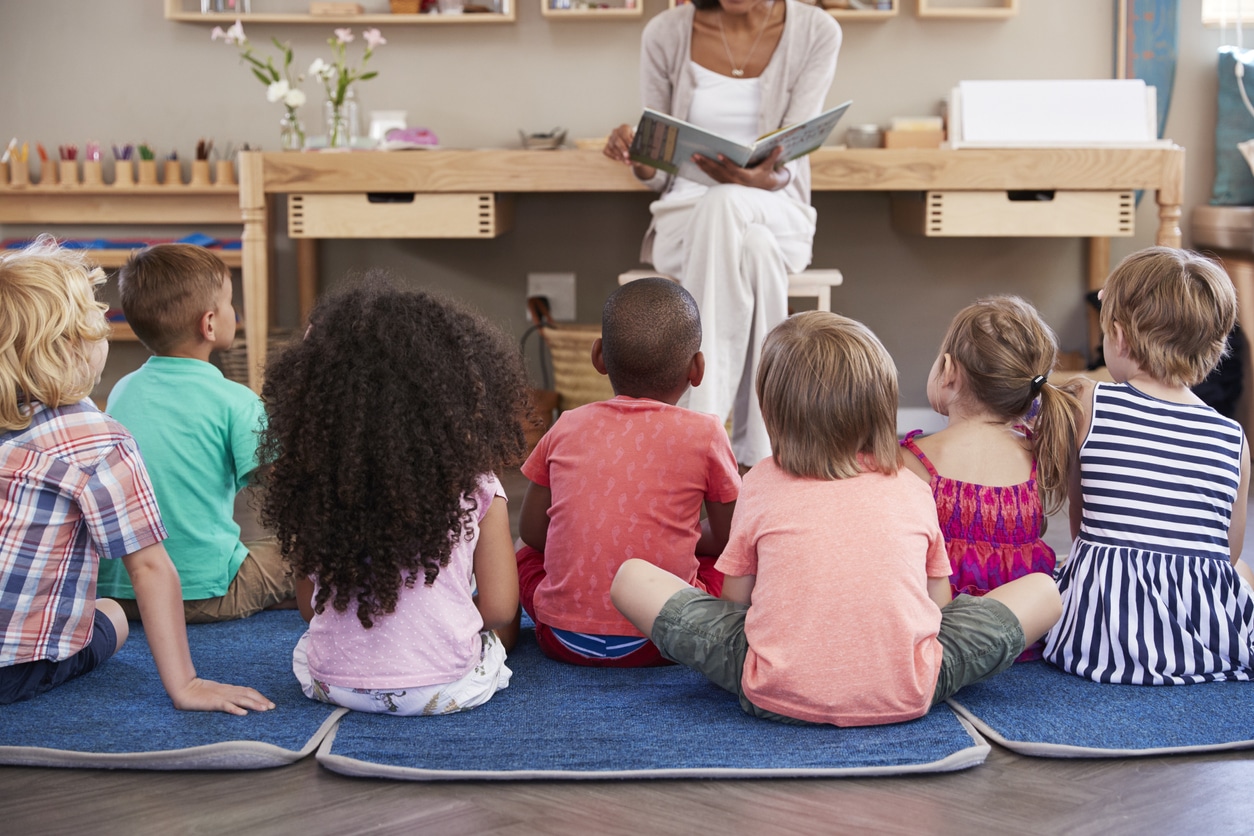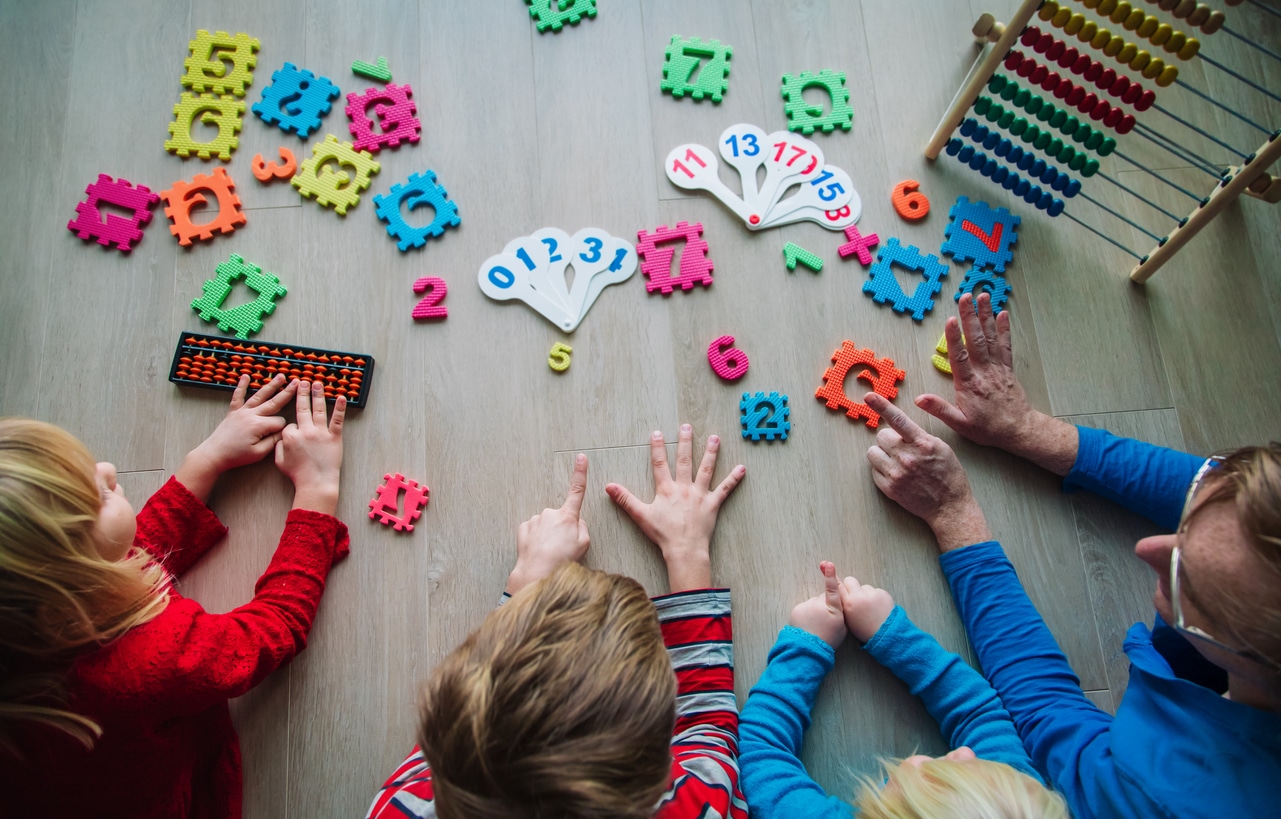Integrating Mathematics, Language, & Literacy

What is the relationship between early mathematics, language, and literacy skills?
Addressing multiple content standards within the school day is complex – especially if you think about mathematics, language, and literacy as discrete subjects. But, we know each of these learning domains are essential and, in fact, build on each other over time. In other words, you can’t be successful at learning mathematics without also being able to read, write, and speak.
In this post, we will:
- Briefly discuss how language and literacy experiences can support mathematics teaching and learning.
- Share an example for how mathematics, language, and literacy can be incorporated into reading time.
The table below describes some of the ways mathematics, language, and literacy skills mutually support each other.

In the early years, one of the most powerful ways for children to become familiar with mathematical ideas is through storytelling. Shared reading time (small or large groups) is an instructional routine that can support the development of multiple academic skills. Consider using reading time to introduce, talk about, and make sense of mathematical ideas embedded within stories.

How can I incorporate math talk and sense-making into reading time?
Consider revisiting a story more than once, with an explicit goal of having children take the following steps (inspired by the work of Lieven Verschaffel, Brian Greer, & Erik De Corte):
- Help the children understand the situation described.
- Construct a mathematical model that describes the essential relationships with the story that are mathematically relevant.
- Use the mathematical model to identify an outcome or solution.
- Interpret and evaluate the solution or outcome in relation to the original situation.
Here are ways some of these ideas for incorporating math into whole group reading time might play out in the classroom:
- One Is a Snail, Ten Is a Crab
- First Read: Complete a “picture walk,” asking students to try and figure out how the author arrived at his number on each page. (A picture walk is a shared activity between a child and an adult that occurs prior to reading the book. As you flip through the pages one by one it is a way to preview the story and allows the child to become more familiar with the book before actively reading the text.)
- You might hear a child say, “Two human feet and one snail feet is three feet! Or “Instead of a dog with four feet, you can have two humans!”
- You might comment, “Wow, I wonder how they came up with that number!” to prompt conversation.
- First Read: Complete a “picture walk,” asking students to try and figure out how the author arrived at his number on each page. (A picture walk is a shared activity between a child and an adult that occurs prior to reading the book. As you flip through the pages one by one it is a way to preview the story and allows the child to become more familiar with the book before actively reading the text.)
- Second Read: Read the story through as you emphasize the use of counting principles (e.g., one-to-one correspondence) and operations (e.g., “How many feet altogether? How do you know?”) in the story. As you begin to read, ask students to listen for your math “key word” and point to their nose or touch their ear when they hear it (you want their actions to be minimal so as to not interrupt other students as they listen.). Ask students to summarize the story and explain how math and your “key word” applies to the story.
- For example, you might assign a target number as the key word, such as 10 (CD3.1t for preschool students) or multiples of 10 (K.3.d for kindergarten students).
- Instead of a third read, consider having students create their own math page or stories using their family, friends, classmates, etc.
- For pre-k students: The teacher can assign each student a number or they can draw a number from a hat. The teacher can work with the student to help them select something that matches their number. Each student can create an illustration to contribute to a class-created number line.
- For kindergarten students: The teacher can assign a target number and students come up with different ways this number can be composed for the chosen characters in their stories.
- Bonus: Have students read their personal page or stories with the class. Be prepared to ask questions that prompt them to share and justify their mathematical thinking. For example:
- Have students share how they composed their assigned number.
- g., “Can you tell us how you counted out 20? Is it the same or different from what [another student] shared? How so?”
- Have students share how they represented their assigned numbers.
- g., “How did you choose to represent the number 20? Can you show us how you know 20 is on your story page?”
- Have students share how they composed their assigned number.


NCTM Resources
Hoffer, W. W. (2016). Developing literate mathematicians: A guide for integrating language and literacy instruction into secondary mathematics. National Council of Teachers of Mathematics, Incorporated.
Altieri, J. L. (2009). Strengthening connections between elementary classroom mathematics and literacy. Teaching Children Mathematics, 15(6), 346-351.
Skalinder, C., & Satz, P. (2008). Integrating literacy and math: Strategies for K-6 teachers. Guilford Press.
The Department of Education: https://files.eric.ed.gov/fulltext/EJ1059655.pdf
The Erikson Institute – Early Math Collaborative also has an Idea Library page that makes book recommendation by topic area. For example:
- Patterns and Structure: https://earlymath.erikson.edu/4-fun-books-that-explore-math-patterns-and-sequences/
- Counting: https://earlymath.erikson.edu/books-about-numbers/
More Questions for the VKRP Team? VKRP provides support via the online chat feature when you are in the system, via email vkrp@virginia.edu, and via toll free 866-301-8278

